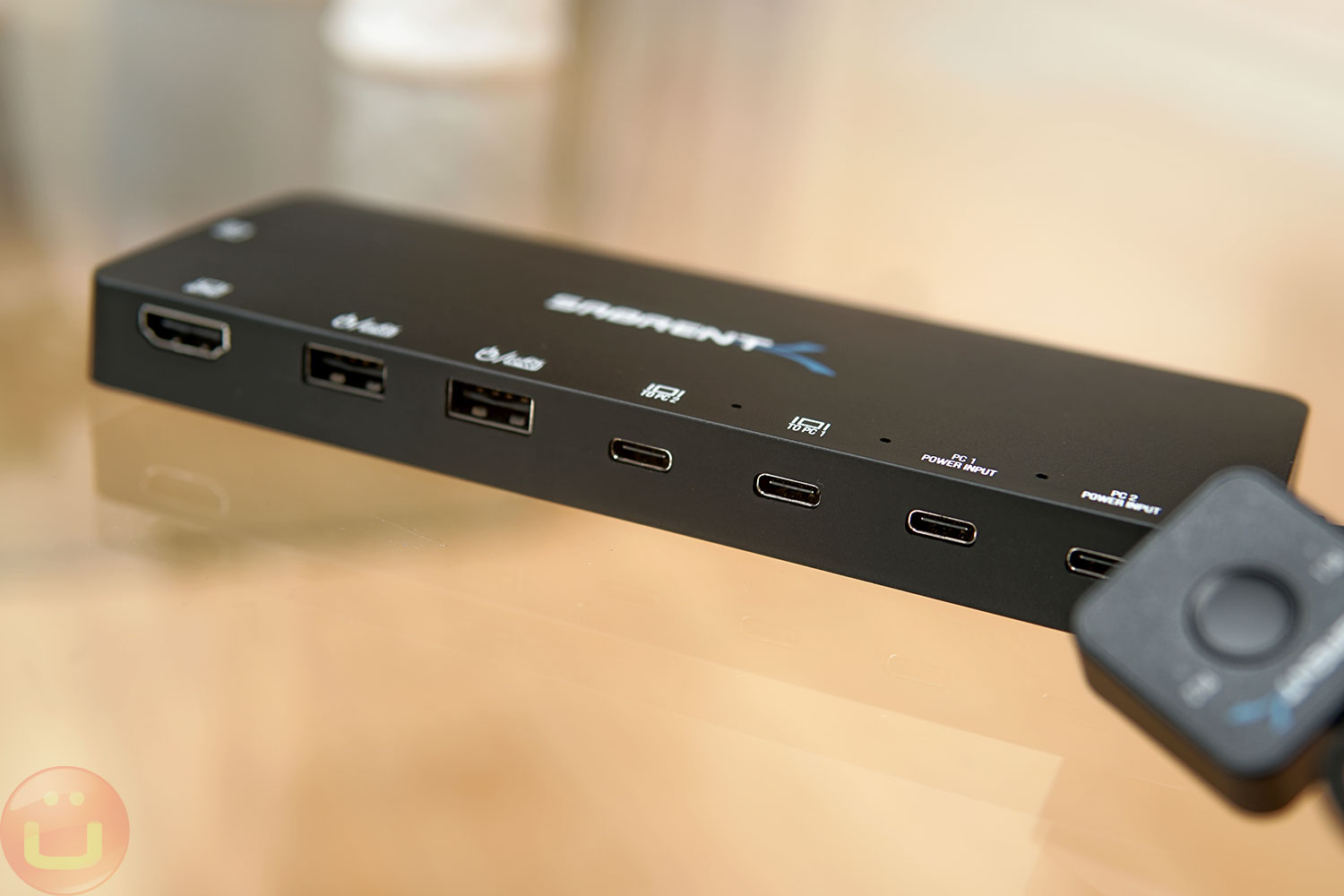With Work From Home (WFH) more popular than ever, many people end up having two computers: a personal one and the one provided by their company. Having both environments completely separated is excellent, especially from a security and privacy point of view.
To preserve precious space (and money) at home, it’s also nice to share your favorite monitor(s), keyboard, and mouse between both several computers. Sharing these devices is essentially what KVMs are for. KVM stands for (Keyboard Video Mouse switch).
KVM boxes have existed for years, and I was first exposed to them by hanging around people who had to manage several computers from their desks. They might be system administrators, have a small render farm, or have a couple of computers in their cubicles.
Modern KVMs could be compared with USB switches, but as their name indicate, KVM must support video outputs. Not all USB switches do, especially with older USB standards defined before USB video output.


This SABRENT USB Type C Dual KVM Switch with Power Delivery (model USB-CKDH) lets two computers share two USB-A (USB 2.0 protocol) and two full-size HDMI video ports.
It is possible to attach an additional USB switch to one of the two USB-A ports of the KVM to extend what you can connect slightly. Remember that the speed remains USB 2.0, and there might be USB power limits (unless you use a powered extra USB switch?).
There are also two USB-C power inputs (USB Power Delivery standard) which ensures using the KVM does not impair charging in case you only have one USB-C port available on the laptop. Note that the maximum power delivery Wattage is only 60W, so check what your computers require.


Once the two computers are connected to the KVM via the included USB-C cables, they can take turns using the two full-size USB-A (2.0) ports and the two full-size HDMI (4K/60Hz each) ports.
A switch button at the end of a non-detachable 3-feet cable allows you to switch which computer has access to all these ports. Upon pressing the switch button, it takes 3-7 seconds for all the devices and monitors to come over. Typically, the keyboard and mouse switch over first, and the monitors take longer.

Older, analog KVMs used to switch faster than this, but with modern, digital-only protocol, switching is more akin to reconnecting the KVM to the new target computer. The system detects devices attached to the KVM, initializes things, etc.
It’s not instantaneous, so if you need to switch VERY often, you might be better off using “mouse and keyboard over the network” solutions such as Mouse without Borders or Logitech Flow. I have tested both of them, and they often suffer from latency issues, even on a local network. At the moment, they didn’t work for my use case.
Conclusion

The SABRENT USB Type C Dual KVM Switch works exactly like one would expect, and it is reliable. Sometimes, one monitor would not switch over, but re-switching does the trick. I didn’t use the power-delivery feature because both my computers have power inputs well above 60W, but it could help you build a more streamlined setup.
I’m unsure if there’s a specific technical roadblock, but I wish the shared ports were USB 3.0 or higher instead of USB 2.0. However, most KVMs tend only to feature USB 2.0 ports. In the context of sharing Keyboard, Video, and Mouse, USB 2.0 is perfectly fine, and this KVM fulfills its role perfectly at a competitive price given its feature set.
However, I’d argue that users would want higher bandwidth from the shared ports. To return to the work-from-home use case, people also want to share their dedicated webcam, microphones, and perhaps card readers. In short, they would like to share all their best gear between both computers. Unfortunately, I haven’t seen a KVM for that.
What’s in the Box?
- Sabrent 2-port USB Type-C KVM Switch (with PD 3.0).
- Mounting bracket.
- 2 x USB Type-C to Type-C cables (1 meter/ 39 inches).
- User manual.
Filed in . Read more about Office and Productivity.
Trending Products

Cooler Master MasterBox Q300L Micro-ATX Tower with Magnetic Design Dust Filter, Transparent Acrylic Side Panel…

ASUS TUF Gaming GT301 ZAKU II Edition ATX mid-Tower Compact case with Tempered Glass Side Panel, Honeycomb Front Panel…

ASUS TUF Gaming GT501 Mid-Tower Computer Case for up to EATX Motherboards with USB 3.0 Front Panel Cases GT501/GRY/WITH…

be quiet! Pure Base 500DX Black, Mid Tower ATX case, ARGB, 3 pre-installed Pure Wings 2, BGW37, tempered glass window

ASUS ROG Strix Helios GX601 White Edition RGB Mid-Tower Computer Case for ATX/EATX Motherboards with tempered glass…










